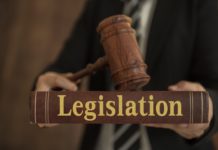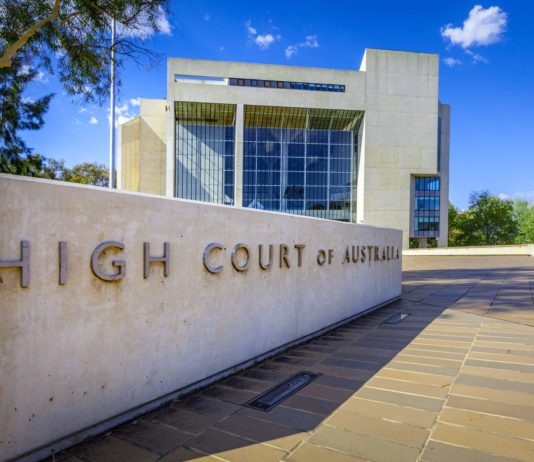Reg 2.72(10)(f): must position have existed or been occupied?
Federal Court. 457 nomination applicant (i.e. sponsor) was required to satisfy r 2.72(10)(f), which provided: "the position associated with the nominated occupation is genuine". Does that provision require that the position has existed in the past in the sponsoring business or that it has been filled by anyone?
s 501CA(4): intention to depart from Art 12(4) of ICCPR
Federal Court. Art 12(4) of the ICCPR read: "No one shall be arbitrarily deprived of the right to enter his own country". Judicial review applicant argued that Australia was his "own country" by reason of having lived in Australia since the age of 4 and that, in determining whether to revoke under s 501CA(4) the mandatory visa cancellation decision made under s 501(3A), Minister was obliged to put him on notice that he might make a decision which would arbitrarily deprive him of the right to enter (and remain) in Australia.
Does Minister bear onus of proving he has specialist accumulated knowledge?
Federal Court. Is there "authority to the effect that specialist decision makers or tribunals are entitled to rely on their expertise and accumulated knowledge garnered through repetitive decision making"? Can it be said that a Tribunal, "unlike a court, is expected to build up “expertise” in matters such as country information" and that taking that expertise into account amounts to a want of procedural fairness by reason of pre-judgment? Does Minister bear onus of proving he has specialist accumulated knowledge?
Does FCA have power to grant habeas corpus?
Federal Court (Full Court). Does s 476A of the Migration Act 1958 (Cth) prevent "direct review" by the Federal Court of an exercise of power under s 189, including by way of an application for habeas corpus? We summarise the answer to that and 35 other questions.
s 36(2)(aa): consequence of past acts
Federal Court (Full Court). FCCA remitted matter to AAT "for determination according to law". AAT disagreed with FCCA reasons and instead followed an earlier FCA decision. Was AAT bound to follow FCCA conclusion? Should a judge follow the judgment of another judge of the same court unless persuaded it is clearly wrong? If FCCA (previous FCCA) finds alternative grounds against Minister, matter is remitted to AAT, Minister does not appeal, AAT affirms original decision and non-citizen applies to FCCA (next FCCA) for judicial review: is it an abuse of process for Minister to argue before next FCCA that previous FCCA was wrong; does previous FCCA decision create an issue estoppel? Are the consequences of a past act or omission capable of engaging the complementary protection criterion in s 36(2)(aa)?
Submission templates
High Court. Practitioner used written submissions deriving from a previous client as a template for submissions sent to the IAA concerning 2 other clients. As a ground of judicial review, must fraud affect a particular duty, function, or power of the IAA? If so, were they affected for either of those 2 other clients? Was the IAA's failure to exercise the power in s 473DC to get new information, namely new submissions, legally unreasonable?
Are the Model Litigant Principles actionable?
Federal Court (Full Court). Section 55ZF of the Judiciary Act 1903 (Cth) provides that the Attorney-General may issue "Legal Services Directions" that are to apply generally to Commonwealth legal work. Section 55ZG provides that some persons or bodies such as the Commonwealth "must comply with Legal Services Directions". Is a breach of one of those directions, the Model Litigant Principles, actionable?
Is s 494AB about jurisdiction? Or does it rather provide the Cth a defence?
High Court. Can it be said that s 494AB of the Migration Act 1958 (Cth) does not take away the jurisdiction of any court to hear and determine proceedings of the kinds described in s 494AB(1), but rather provides the Commonwealth with a defence to those claims if they are made in a court other than the High Court? If so, could proceedings instituted in the High Court in relation to the matters identified in s 494AB(1) be remitted to another court for hearing and determination without s 494AB providing an answer or defence to the claim?
Did AAT’s opinion on matter A shield decision from its error on matter B?
Federal Court. Applicant's visa was cancelled under s 501(3A). Delegate refused to revoke cancellation under s 501CA(4). AAT: found it had jurisdiction to review delegate's decision; erroneously found revocation request had not been made by deadline; thus, found that neither AAT nor delegate had power to revoke; nonetheless found that, had it been made by deadline, it would have affirmed delegate's decision, based on its opinion that there was not "another reason" to revoke cancellation; set aside non-revocation decision; and remitted matter to Minister with a direction that the cancellation decision not be set aside. Was AAT's error not jurisdictional, given its opinion that there was not "another reason"?
Once a non-alien, always a non-alien?
High Court. Plaintiff was born in what is now Malta in 1945, as a British subject. He then entered Australia in 1948 and became a UK citizen in 1949, retaining the status of a British subject. He held an absorbed person visa since 1994, until that visa was cancelled. He was never naturalised Australian and his parents were not Australian citizens. Can it be said that, because the Plaintiff had the status of a British subject when he arrived in Australia, he could not then have been conceived of as an "alien", with the result that he thereby acquired the status of a non-alien and therefore that he remains outside the reach of s 51(xix) of the Constitution?




















